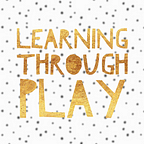Rainbow Rice Alphabet Hunt
Who loves sensory bins? I do! There is so much learning involved when children engage in hands on learning and explore their senses. As children get older, there are certain resources and themes you can add to a sensory bin to make them more challenging and teach specific learning outcomes.
When first making a sensory bin, you need to choose a base material for children to explore with. There are so many different materials you can try in a sensory bin, but rice is definitely my favourite.
To make rainbow rice you will need the following items:
- Large plastic takeaway containers with lids OR plastic ziplock bags
- White rice (I used 10 cups in total, 2 cups per colour)
- Powder paint OR food colouring (I used powder paint because that is what I had, but food colouring would do the same job)
- Small amount of water
You will need to:
Add 2 cups of rice (or desired amount) to each bag or container. If using powder paint, add a tiny bit of powder to each bag (1 colour per bag). Add a touch of water to each bag which helps spread the colouring on to the rice. If you think you need more colour, simply add more powder. It’s always better to add a little bit of coloured powder at a time to make sure you get the right colour, rather than add too much at the beginning. Give the container/bag a good shake so that the colouring and water cover all of the rice. To dry, I simply left the lid off the container and let them dry in the sun. I occasionally stirred the rice to make sure I didn’t get any clumps and that the rice dried evenly. It dried overnight, ready to use the next day.
How to set up a Rainbow Rice Alphabet Hunt:
Once the rice has dried, pour each container into a large tray. You can pour the rice so the colours are neatly lined up, or simply pour them in and mix it up. It won’t be long until the children get busy with their hands and the colours become mixed up anyway! Children can explore this alphabet hunt with their hands, or simply add tweezers for an extra challenge. Lastly, add alphabet pieces to the tray. I used alphabet pieces from Kmart, which were only $3! Click here for alphabet pieces.
What letters can you find…?
What did the children learn?
- Language skills (as the children played, they discussed the letters they were picking up)
- Letter recognition (recognising the letters they were engaging with)
- Fine motor skills when using the tweezers
- Hand eye coordination
- Social development (working alongside and together with peers)
- Cooperative play skills
- Engaging their senses
Please note that this activity was carried out with children aged 3–5 and adult supervision was present at all times. Not recommended to consume the rice.
